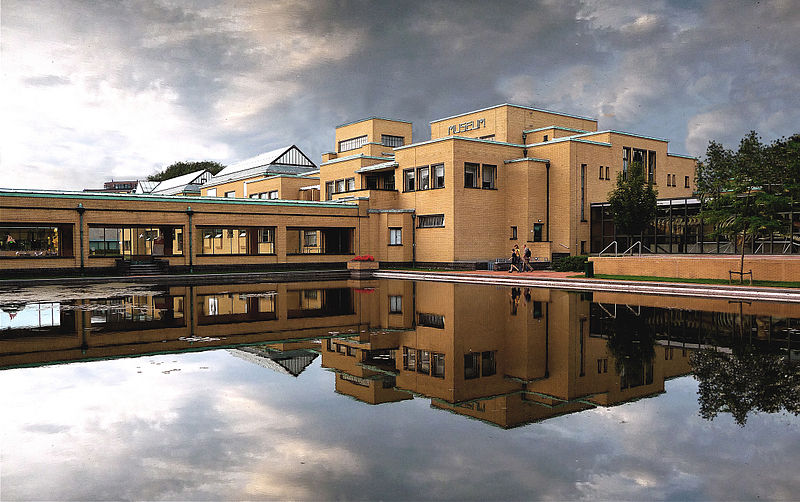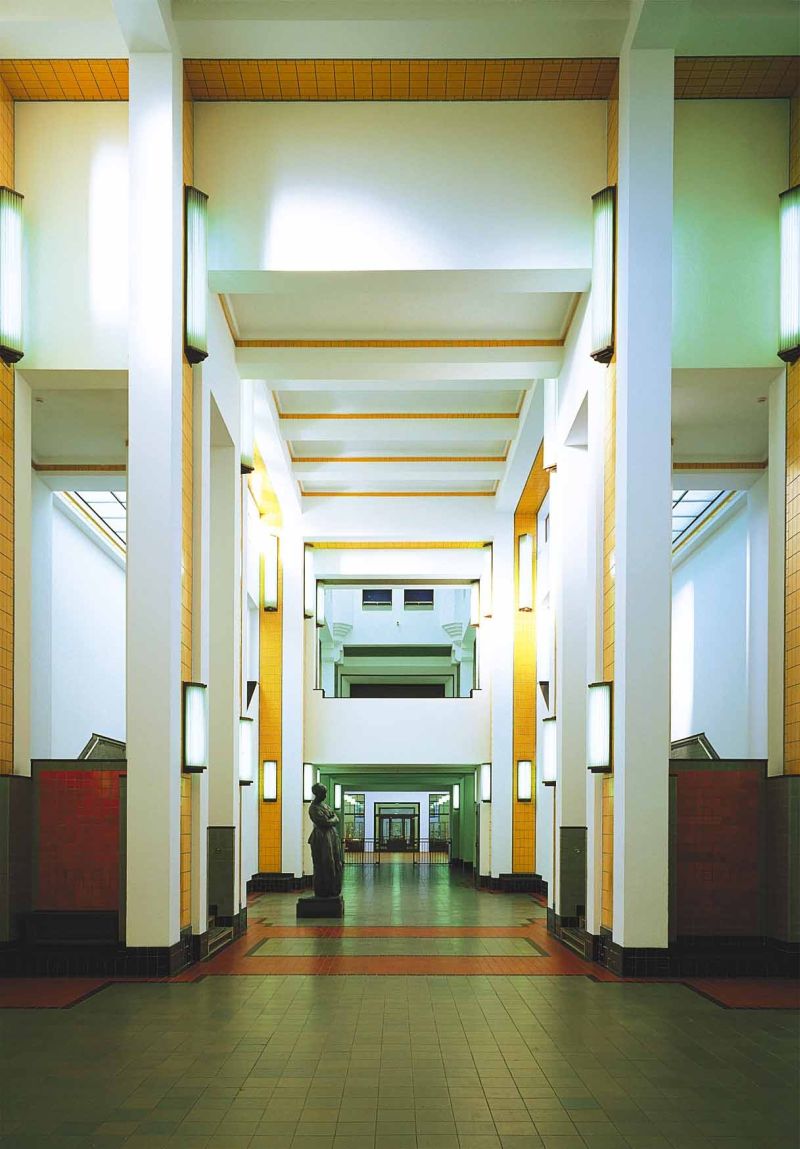“Walk into a new city; naked. Looking down; barefoot. standing outside a train. Looking for an exit; following the exit signs. Cold stone touching with every step, feeling the pattern on the tiles when eyes are closed. Being invisible. look around; the world loading itself behind every corner. To visit.”
A city is not one thing. It has all the little details people tend to forget or do not see when they walk into a city. A space is never empty; even the air carries the identity of the surroundings. A big problem if you ask me for the city designers. How can be decided if a building fits the city; the persons; the air it’s going to breath?
Let me tell you the story of an architect called Berlage.
Berlage didn’t start his architectural career in Holland, although he was born here. He first tried to build a career as an artist through applying at the Rijksacademie. This didn’t work out, so he took the next step and he went to study in Zürich at the Eidgenössische Polytechnische Hochschule, and after that he decided to make a tour through Europe. He returned to Holland again when big projects were planned and he was to be the assistant of Theo Sanders [x]. Together they made a plan for the competition to make the new Beurs in Amsterdam. Their design was quite historicizing and eclectic. Compared to the, after they stopped working together, design of Berlage itself; which was a much smoother design, and more focussed on modern architecture in one monumental-looking piece which still fitted the surroundings. In this period Berlage focussed more on the Romanesque, than on the older eclectic style. The design of Berlage was realised in 1883. This was the beginning of his career.
The old stock exchange of Amsterdam
One of the other most important buildings further in his career is the Gemeente Museum in The Hague. This was also his last mayor work within architecture. It actually opened its doors after he died in 1934. In the construction Berlage decided, instead of using the upperclass-floor material, to actually use plain bricks for the facade.
The facade isn’t a main carrier of the building, that construction is made of iron and concrete. There’s at least 12.000 m3 of concrete used for the total construction, and 1.200 tons of re-bars. The number 11 is used a lot in the measurements in the construction of the museum. Like the length of the hall, or the vitrines. It can actually be found all over the museum. Furthermore the museum is specially lighted for the specific needs of the art pieces as well as the customers. The best light seems to be the light that comes from the side. Also the glass roof construction is made in the way that the light is send to the sides of the room instead of to the middle. This prevents unwanted reflections in the works. Berlage decided to use a way of heating that was more effective and safer for the art works. He used panel-heating. By this, warmth is not just delivered through a radiator, but through a system of pipes behind the wall, which would fill the room through a series of panels. The room was more evenly warmed. Still, one of the most special things about the museum is that every space is differently divided. This took away the risk of people getting tired of the museum.
Picture of Wall-painting Sol LeWitt • Picture of Light falling on collection
At the moment I saw the building, I felt it didn’t bother me, like most of the architectural constructions I visited before. At first; it was very low built, and together with the different heights of every part, it felt very nice in the way of looking at it. I walking in through a long, and low hall, which was surrounded by baths of water. It gave a feeling of comfort, as if it was completely focussed on people, instead of the economical side. Inside it didn’t seem like a museum at al.. It was at first; very quiet that moment, except for the group I went with. The main hall of the museum was very spacious and light. As we continued to walk further in the museum, I noticed that some halls were quite dark and other quite light again. It didn’t bother, but it gave a kind of atmosphere of differences in the museum. I saw a lot of people, but it never gave the feeling of the museum being too busy. I overall enjoyed the middle-garden the most. It was hidden inside the construction and as the first spring sun came through, I saw the sun filling the plaza, without a construction ever blocking it.

